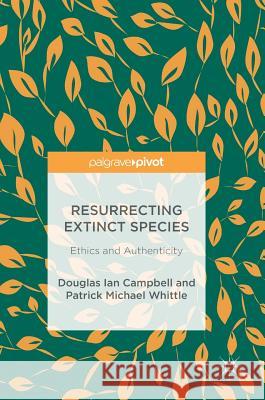Resurrecting Extinct Species: Ethics and Authenticity » książka
topmenu
Resurrecting Extinct Species: Ethics and Authenticity
ISBN-13: 9783319695778 / Angielski / Twarda / 2017 / 128 str.
Kategorie BISAC:
Wydawca:
Palgrave MacMillan
Język:
Angielski
ISBN-13:
9783319695778
Rok wydania:
2017
Wydanie:
2017
Ilość stron:
128
Waga:
0.32 kg
Wymiary:
21.01 x 14.81 x 0.97
Oprawa:
Twarda
Wolumenów:
01
Dodatkowe informacje:
Wydanie ilustrowane











